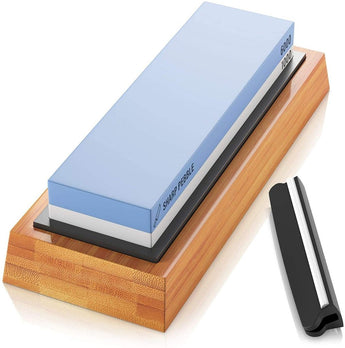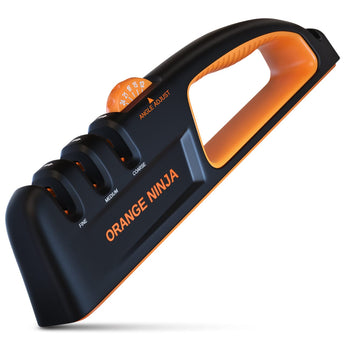
Having good tools to sharpen i.e. a decent sharpening stone is just as important as having a decent knife. But if it’s the first time you are exploring the idea of sharpening your own knives or buying a sharpening stone for that matter, you may end up choosing a type that may not serve your precise purpose or knife.
We’ll discuss today a couple of basic mistakes that people tend to make while buying a sharpening stone and how to avoid them.
Buying only a fine stone;
We can understand why you may desire a “one size fits all” solution. It saves us time and takes the guesswork to a bare minimum. And if you happen to be a busy mom or someone who barely has time to cook, it becomes all the more relevant.
But there are times when this theory can actually be a disadvantage. Most beginners wrongly tend to believe that having a fine grit sharpening stone will sort out there every single knife. They tend to hold the belief that spending some extra minutes on a fine stone will eliminate the need for a coarse stone. A good analogy here would be to use a slow cooker to get the frying pan’s job done. They both have a distinct cooking purpose and cannot substitute for each other.
Similarly the fine stone’s main purpose is to “refresh” or refine the edges on a knife that’s not quite dull yet. Coarse stone on the other hand is meant specifically to treat dull edges, effectively and quickly. There are two key disadvantages if you persist with only a fine stone; one, it will take a lot more than “a few extra minutes” to treat a very dull knife. Secondly, the cost per use of fine stone will increase many fold because the wear and tear on it will be much higher.
A handy tip in case you are squeezed a bit on cash is to opt for a cheaper combo stone that has both fine and coarse sides to it rather than shelling out on an expensive fine or coarse single sided stone.
Going too big or too small:
It’s a lot easier to sharpen a small knife on a larger stone than going the other way around. There are two key components to consider while determining the correct stone size; width & length. Which one of these factors is more important is dictated by the type of tools you need to sharpen. For instance, if you use woodwork tools, a wider stone of 2.75 to 3 inches is much more suitable.
Since knife sharpening requires a slicing motion, the length becomes a much more important factor. We would advise choosing a stone that’s at least 7-8 inch in length for your knife sharpening needs.



